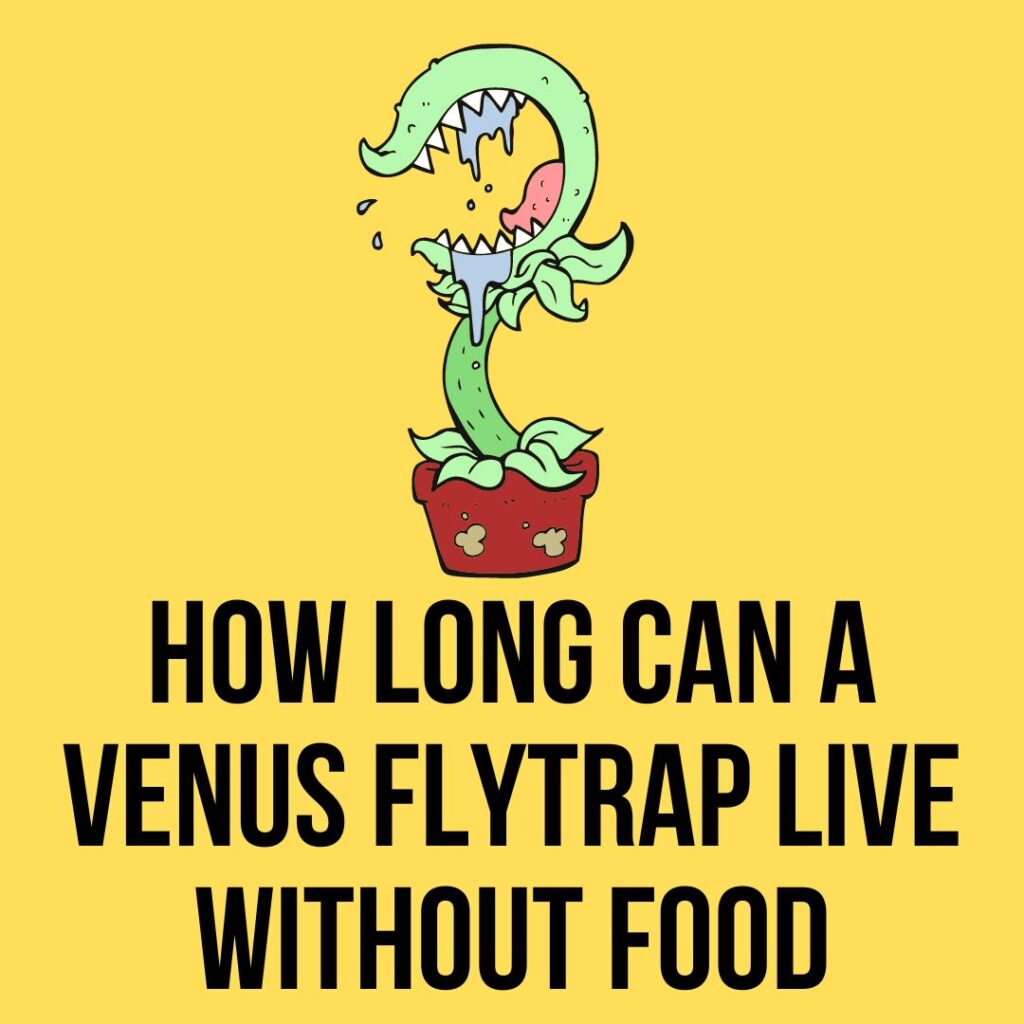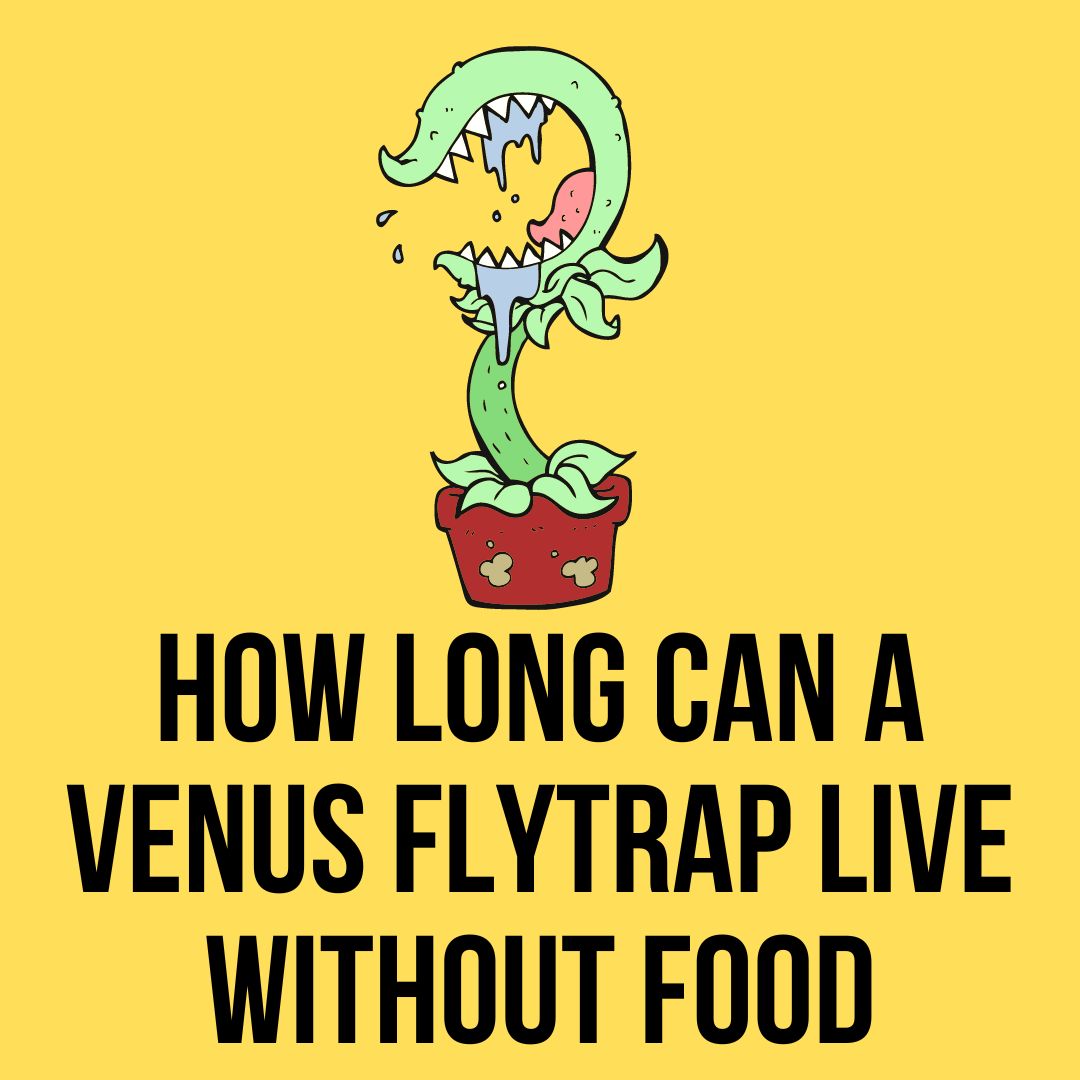For being a carnivorous plant, gardeners always have many doubts about the venus fly trap’s diet. Like how much the plant should eat, when to feed, what to feed, and many other questions. But this extra thinking is unnecessary, gardeners don’t need to be too concerned about this. Venus flytraps do not usually die from no feeding. So how long can a venus flytrap survive without food?
A venus fly trap can survive two or three months without eating. Here eating terms means feeding them insects. The whole carnivore thing works more as an extra kick for growing. Feeding a flytrap once a month is enough, this way the whole plant will be fed three to four times a month depending on the flytrap it has.
But remember feeding a flytrap is also important, that’s why the plant developed the flytrap in the first place
The term “food” is different for animals and plants. Plants can only take ions. They prepare their food via photosynthesis with the help of sunlight. Most plants mainly depend on soil and oxygen for nutrition. But there exists a special kind of plant which has acquired the taste of meat a long time ago and they are known as carnivorous plants among common people.
So wildly they were used to grow in low-nutrient soil. Those areas don’t have many crucial nutrients like nitrogen, phosphorus, and potassium. Thus they have developed a way to manage these unfilled nutrients through eating insects, bugs, etc. In the wild, they get to eat plenty of local insects and bugs so they don’t have to worry about quantity.

How long can a venus flytrap survive without food?
Up until now, we have only discussed the natural scenario. If you are growing venus flytrap indoors or in your garden there are some questions that might have already crossed your head. Like how much do they need to eat?
Normally when we are growing them by ourselves we try our best to ensure proper soil mix, watering, humidity, and carpings. So if everything is done thoroughly we can ho[pe that the plant will manage their necessary food through photosynthesis. I personally know some gardeners who have not fed their venus flytrap not even once. But I do not recommend it.
Because in the growing season the plant will need lots of nutrients, feeding them in time will boost up growing. Genuinely speaking they can survive for two or three months without eating insects. The insects that they eat work like fertilizer to them. That’s why they don’t need manure at all, they get their fertilizer nutrients from insects.
And feeding them is quite an interesting sight. Every gardener enjoys it. But remember not to overfeed them. Overfeeding will cause the flytrap to turn black fast and the plant will use up its energy. After catching a prey it will take a minimum of a few days to reopen them, the long digestion process requires more time. You don’t have to feed every flytrap together. Feeding them once in a week or two is enough.
Ensuring proper sunlight, and pure water is more important than feeding them bugs. Another notable thing is that they don’t starve. But they undergo a dormancy period during winter. During that time the soil needs to be slightly moist.
Most people get frightened when they see the fly traps turning black in the winter season. But it’s a normal phase. They enter a resting period during winter for the shortened daytime and temperature drop.
Why isn’t your venus flytrap eating insects?
This is a bit of an unusual case. But we sometimes get that question. They have the traps for growing in low nutrient soil which doesn’t have the required nitrogen as the plant needs. But if the soil has proper nitrogen the plant does not have to rely on eating insects. That’s why sometimes they don’t eat insects, just catch them as a natural reaction by closing their jaws.
If they have enough nutrition already they may not eat insects for some time.
How many insects should you feed?
Venus flytrap always doesn’t have energy stored in them. Opening and closing a trap requires a lot of energy. So you should not tease them. Some suggest that if one does not need to feed them, the plant will manage and catch their food on its own. But it’s not quite right.
The mentioned suggestion is only for wild cases, where they are native and grow naturally. But if you are growing them indoors with a lack of insects you should feed them. As for single insects, feed the one which has the ⅓ size of a flytrap. And for feeding more than one insect, like flies, or mosquitoes, two will be enough.
So, every week one bug per flytrap. Don’t need to feed all of the flytraps at once, feed a maximum of two to avoid overfeeding.

Why don’t venus flytraps get fat?
Why do animals get fat? Because of storing energy as fat. But for other plants the process is different. Carnivorous plants like venus fly traps store their energy as carbohydrates in their roots.
You can notice the white part above the root is thick and fleshy. That’s where they store their energy i.e. fat. This helps them survive in the winter dormant season and the boosting at the beginning of the spring.
For storing fats/energy in roots, the venus flytrap doesn’t get fat.
Conclusion
Like other plants, the venus flytrap gets its energy from photosynthesis. The bugs eating work more as fertilizers. That’s why they do not need external fertilizer when growing. So feeding them is important because it fills fertilizer requirements.
So a venus flytrap can live without food for two to three months. But if not fed they won’t starve. But remember you have to water your flytrap regularly so that the soil can stay moisturized over time. A single flytrap’s lifespan is two to three months. After that, it will turn black and die. The plant will grow a new trap then.
